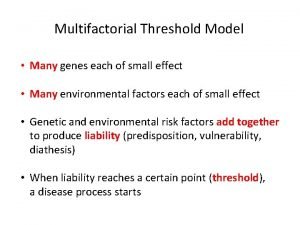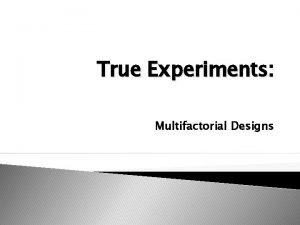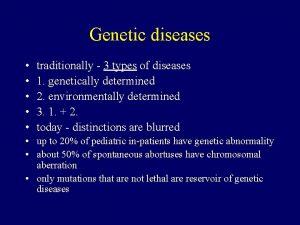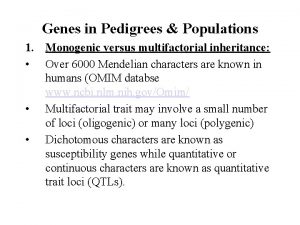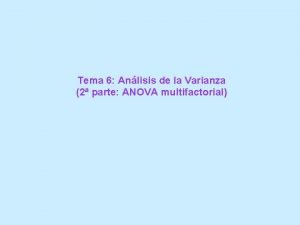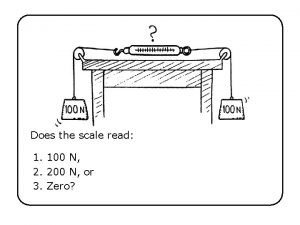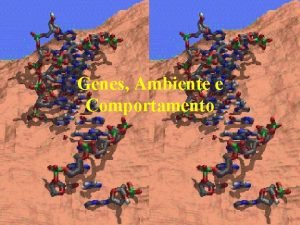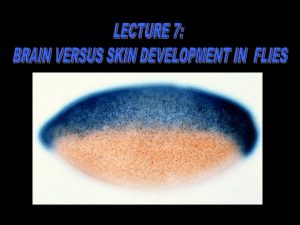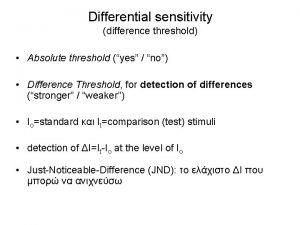Multifactorial Threshold Model Many genes each of small












- Slides: 12

Multifactorial Threshold Model • Many genes each of small effect • Many environmental factors each of small effect • Genetic and environmental risk factors add together to produce liability (predisposition, vulnerability, diathesis) • When liability reaches a certain point (threshold), a disease process starts

Multifactorial Threshold Model NOTE: The assumptions of many factors of small effect and the additive nature of the effects guarantee that the distribution of liability will be very close to normal (Corollary of the central limit theorem).


MFT: The “god only knows” model 1. Imagine that you could measure some aspects of liability and then use a logistic regression to predict the disorder; b is the strength of prediction. 2. You want to do better, so you measure more aspects of liability and repeat the logistic regression; b and the “steepness” of the regression line increase. 3. Continue repeating step 2 until you have measured all sources of liability, i. e. , you have reached the “god only knows stage. ” 4. The threshold model is the mathematical limit of this procedure (see next slide)

MFT: The “god only knows” model: As b increases, the logistic model approaches the threshold model.

MFT Model: Key Concepts 1. Correlation in liability: The estimated correlation for relatives in their latent liability. 2. Heritability of liability: Using genetically informative correlations in liability to estimate the extent to which the latent liability dimension is heritable.


Population: 76 27 Unaffected 818 79 Unaffected Affected Relative 2: Affected Relative 1:

Sample: 27 Unaffected 79 Relative 2: Affected Unaffected Affected Relative 1:

Statistics: 1) Concordance rate: Probability that relative 2 is affected given that relative 1 is affected. 27 27 + 79 =. 25 2) Tetrachoric correlation: Correlation in underlying latent (i. e. , unobservable) liability.

Multiple Thresholds:

Multiple Thresholds: • Classic example: Schizophrenia and schizotypal personality • Polychoric correlation = correlation in liability
 Multifactorial threshold model
Multifactorial threshold model Linked genes and unlinked genes
Linked genes and unlinked genes Homeotic genes
Homeotic genes Linked genes and unlinked genes
Linked genes and unlinked genes Palin model
Palin model 2x2 between subjects factorial design
2x2 between subjects factorial design Multifactorial inheritance.
Multifactorial inheritance. Limnked
Limnked Ve
Ve Anova multifactorial excel
Anova multifactorial excel Radius of each small circle
Radius of each small circle Nellie hangs motionless by one hand from a clothesline
Nellie hangs motionless by one hand from a clothesline Write as many words as you can
Write as many words as you can
